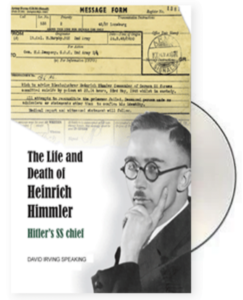
Early photo of Heinrich Himmler with his two brothers.
HUMBLED BY DEFEAT, RUINED BY REPARATIONS, the future for Germany looked bleak. A nameless gloom assailed Himmler, the military reservist. On November 7, 1919 he and Lou fetched helmets; he already had ‘the King’s tunic,’ as he called it, explaining, I’m a soldier and always will be.’ ‘Gebhard, Lou, and I talked some more,’ he wrote, ‘about how fine it would have been to go off to war together. Perhaps then I wouldn’t be here today – one fighting heart fewer… In a few years’ time I may yet go off to war and do battle. I’m looking forward to the war of liberation,’ he hinted, ‘and if there’s still a sound limb left on me I’ll be there.’ ‘Today,’ he wrote on December 1, 1919, ‘I’ve got a uniform on again. It’s the only suit I love to wear…’
Now nineteen, he began thinking of emigrating – to Russia. Back in Ingolstadt for a day, he talked it over with his parents. ‘There’s no place like home,’ he wrote. ‘Went for an evening stroll and a long chat – with Papa about Louisa, with Mama about the Russia thing mostly, and about the political and economic future. I prayed in the evening and was in bed by ten-thirty already.’ He missed his mother’s at-chocolate comforts: ‘It’s nice to be back home again,’ he wrote a few days before Christmas, ‘then you can be a child again.’
Louisa or Maja? ‘How happy could I be with either,’ John Gay had written in The Beggar’s Opera, ‘Were t’other dear charmer away.’ On the eve of St Nicholas, December 6, Heini found a mystery present, a gift hamper; from a blonde hair which his careful search discovered on it, he deduced that it was from Maja. On the way to the ice rink with Ludwig on the eighth, they talked about Maja, Kathe, and Gebhard, but at the ice rink Maja was downright obnoxious. The gift was from another blonde. ‘Just shows how stupid a man in love can be.’ He decided, ‘If l don’t find the girl who loves me, then I’ll head off to Russia alone. If Maja is still in love with me, then I’m glad for her because it’s great to love and be loved.’ A few days later, he summed up: ‘Maja is ignoring me. With her and Louisa I have learned one lesson: “There’s none so cruel as girls who have once loved you”.’
___________
David Irving’s book can be purchased on his website.






